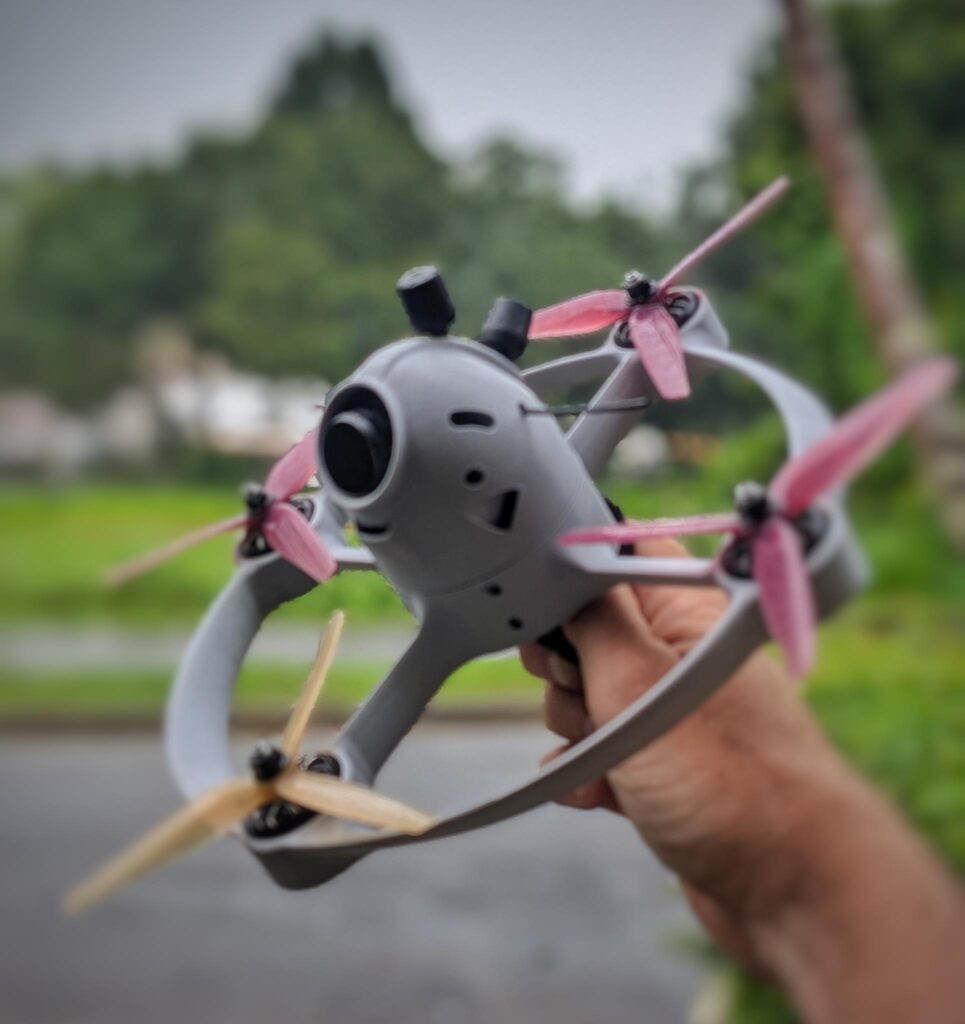Your cart is currently empty!
The PLUS Frame: Clean Air, Every Turn.
A long time ago, in a garage far, far away… 2004, drone frames were built using RC-Align Helicopter booms, One of our builds utilized a dog chew for the center hub!! Propellers were hard to source, it wasn’t easy, but it was a fun challenge…
With the camera angle at 0% pointing straight the front boom would be in the view, which would ruin the photo or video, So it made much more sense to have an X frame!! Times have changed, and so have flying styles. Today, most FPV pilots fly with a camera angle of 25 degrees, normally 45% or more, meaning the “unobstructed view” advantage is no longer relevant, as the front boom is now under the camera.
When I look at typical YouTubers showcasing their drones on the wall in the background of their videos, nearly every frame is an X. Is it because they’re genuinely better? Or is it simply a trend? Perhaps we should blame Mr. Steele for popularizing the aesthetic. Regardless, X frames dominate the market—but not without some serious drawbacks.
Take stretched X frames or deadcat configurations, for example. While marketed as revolutionary designs, they often come with compromises. Many of these frames are designed to look sleek, but once you strap a bulky 6S battery to the top, they resemble flying bricks, complete with poorly balanced center of gravity and little thought to aerodynamics. Even worse, these frames require different PID tuning for pitch and roll due to their asymmetrical moment arms, leading to less-than-optimal performance in certain scenarios.
The Advantage of the Plus Design
Here is one simple example. Imagine the drone is hovering right in front of you. You’re holding it steady, and then you initiate a full 360-degree right roll. Here’s what happens:
In a Plus frame, only the right motor slows down, and the left motor speeds up to create the roll, while the front and rear motors maintain consistent thrust. This balance ensures the drone retains altitude throughout the maneuver. Perfect for doing (flippyfloppys) acro flying!!
Now compare that to an X frame. During the same 360-degree roll, two motors on one side slow down, and two on the other side speed up. Which leads to altitude loss. To combat this they are relying on more authority of the two motors that speed up and some snappy rates with higher PID’s for the Roll Axis.
Why the Plus Frame is Better than the X Frame
- Left and Right Props in Clean Air: In a Plus frame, the left and right props operate in unobstructed airflow, maximizing efficiency and thrust. In contrast, X frames often create turbulence as the front props disrupt the airflow to the rear props.
- Simpler Movement Dynamics: Roll and pitch movements involve only one motor on each axis speeding up or slowing down. This makes control more precise and allows for simpler IMU calculations.
- Better Altitude Retention: During maneuvers like rolls or pitch changes, the Plus frame keeps the front and rear motors (or left and right) steady, maintaining consistent lift. X frames often lose altitude due to multiple motors reducing power simultaneously.
- Symmetrical PID Tuning: The Plus frame’s uniform geometry simplifies PID tuning, providing consistent and balanced flight characteristics. The Roll and Pitch should be the same.
- Improved Aerodynamics: With the forward motor directly in the line of flight, the Plus frame reduces drag and turbulence. X frames, with diagonal arms and props, tend to disrupt airflow, especially at higher speeds.
- Stronger and Simpler Frame Design: The central structure of the Plus frame evenly distributes forces during impacts or high-thrust maneuvers, reducing the risk of damage.

